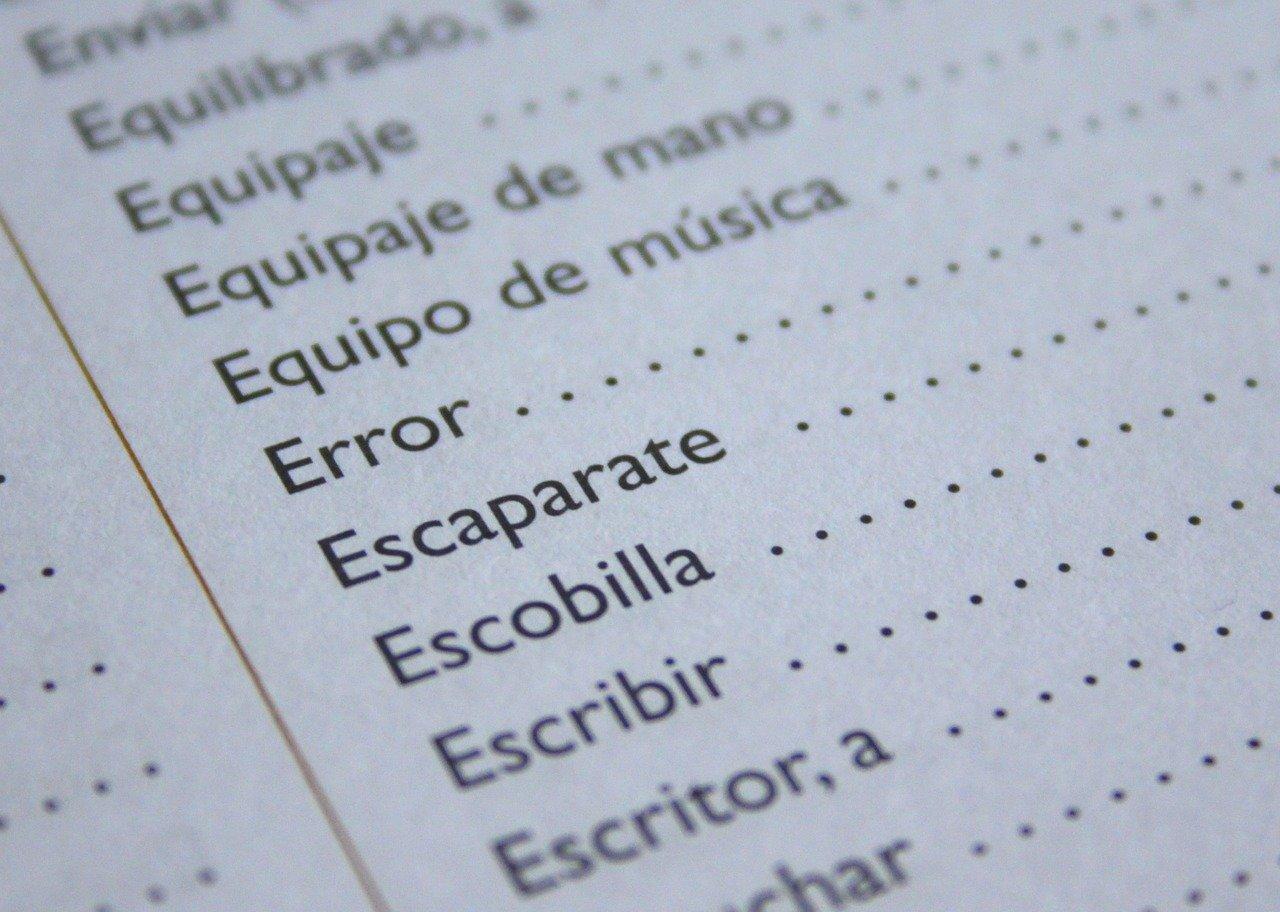Brains are farther than the eye - Spanish Proverb
The Spanish language is one of the, if not the most, widely spoken languages in the world. Did you know that Spanish is the official language in as many as 21 countries in the world and not just in Spain? This is probably reason enough for someone to learn Spanish. The language itself is very beautiful ad highly nuanced. Learning Spanish is like learning a new form of art. The words, the vocabulary, the accent - each aspect of the language is exciting to learn. No wonder, you can find so many different institutes and platforms offering courses int the Spanish language. And then there are online Spanish classes that offer the convenience of learning the language from the comfort of your home.
Learning any new language is not easy. But there are certain methods and techniques to learn a new language, its words and vocabulary. In this article, you will understand the basic fundamentals of Spanish grammar. And in particular, the different aspects of Spanish vowels when you begin to explore what are diphthongs and triphthongs.

Learn Spanish Grammar Basics and Fundamentals

The Spanish language has a lot in common with English. Quite often, English-speaking individuals are surprised at how quickly and easily they can pick up Spanish words. This is because of the presence of a significant number of cognados or words that look and/or sound similar in both the languages. Again, some of these words are borrowed from still other languages like Arabic or French and are called prestamos linguisticos. For example,
- La educacion translates to education in English, but is a word of Latin origin.
- La comunidad translates to community in English, but is a Latin-origin word.
- El/la azucar, which means sugar in English, has been borrowed from the Arabic vocabulary.
- El chocolate, or chocolate in English, has been borrowed from the French vocabulary.
Differences in English and Spanish Grammar
A Spanish teacher will also help you understand how Spanish grammar is different from its English counterpart.
1. Placement of Adjectives
In an English sentence, the adjective is typically placed before the noun. But in Spanish, descriptive adjectives that modify a noun, is usually placed after the noun. So, if you want to say "comfortable hotel" in Spanish, you will say hotel confortable!
2. Gender in Grammar
Unlike the English language, all Spanish nouns are either masculine or feminine. The Spanish even refer to inanimate objects as he (el) or she (ella).
3. Modifications of Verb Endings
A key element of a Spanish language course is to learn Spanish forms of conjugations, that extensively modifies verb endings in order to indicate tense, mood, and person.
4. Flexibility in Using Subjects
Unlike the English language, which mandatorily requires a subject to complete a sentence, the Spanish language may or may not use a subject to construct a grammatically correct sentence.
5. Sentence Order
Both the Spanish and English languages use the format Subject + Verb + Object to form a sentence. But in Spanish, an object pronoun may be placed before the verb.
Spanish Lessons to Understand Parts of Speech

There are nine different parts of speech that are covered in Spanish lessons -
- Nouns: Sustantivos in Spanish, nouns can be the name of a person, or a things, or a place or even a concept. Spanish nouns carry the gender and number as well. The status of a noun is defined by the type of article used, which could be definite or indefinite.
- Articles: Artoculps in Spanish, articles can be definite like El or La (The in English), or indefinite like Un or Una (A in English). Definite articles in Spanish are Los and Las, while indefinite articles in Spanish are Unos or Unas.
- Pronouns: Pronombres in Spanish, pronouns and nouns in Spanish carry the same gender and number, since the former are used to replace the latter in a sentence. The different types of Spanish pronouns include personal pronouns like yo, tu, el; demonstrative pronouns like este, esa; possessive pronouns like los mios, la mia; relative pronouns like que, el que, la cual; and indefinite pronouns like algo, alguien.
- Verbs: Verbos in Spanish, this is a word that is used to express an action or a state of the subject in a sentence. Spanish has two types of verbs - regular and irregular, and multiple verb tenses.
- Adjectives: Adjetivos in Spanish, these words describe a noun(s), and must agree with the gender and number of the latter. Spanish lessons cover descriptive adjectives like tonto, grande, etc. And limiting adjectives like este, mi, la, los.
- Adverbs: Adverbios in Spanish, modify the verb, or an adjective, or another adverb. The different types of adverbs found in the Spanish language are adverbios de tiempo or adverbs of time like luego, primero, etc.; adverbrios de lugar or adverbs of place like alla, aca, etc.; adverbios de modo or adverbs of manner like mal, lentamente, etc.; adverbios de afirmacion y negacion or adverbs of affirmation and negation like si, nunca.
- Prepostions: Preposiciones in Spanish, these words are used in a sentence to show the relationship between different items. Common Spanish propositions are sin (without), con (with), antes (before), despues (after), arriba (above), abajo (below), debajo (underneath), and contra (against).
- Conjunctions: Conjunciones in Spanish, these words link different sets of words in a sentence or paragraph. The most common conjunctions in Spanish are y (and) and pero (but).
- Interjections: Intejecciones in Spanish, these are exclamations and sounds that you can make or use to express an emotion, like ¡Ay!, ¡Ah!, etc.
What are Diphthongs and Triphthongs in Spanish Grammar?

A wise man always changes his mind, a fool never will - Spanish Proverb
A diphthong or diptongo in Spanish is a combination of two vowels in the same syllable, while a three-vowel combination is called a triptongo or triphthong.
Unfolding the Spanish Diptongo with Spanish Classes Near Me
Spanish diphthongs are formed by the combination of a strong and a weak vowel, or two weak vowels. Needless to say, that in the former type, the strong vowel will be stressed more than the weak one.
Learn Spanish Diphthong Accentuation
Written accents in Spanish are called tildes. You should avoid accenting words with a single syllable and accent those words that stress on the last syllable. Always accent the strong vowel in a diphthong.
Unfolding the Spanish Triptongo with Spanish Classes Near Me
As part of your course when you learn Spanish, you should be aware of the following features of a triphthong -
- A triphthong does not trip off the tongue very smoothly.
- Triphthongs always combine a weak vowel with a strong vowel, followed by another weak vowel.
- The way to speak with triphthongs in a sentence or word is to stress on the stronger vowel.
- Spanish triphthongs follow the same accentuation rules as Spanish diphthongs.
Learn Basics Spanish Terms from A Spanish Teacher

To learn Spanish, you have to have access to a good Spanish teacher and effective Spanish lessons. When you sign up for a Spanish language course, you have the chance to get familiar with the most popular Spanish terms that let you master the basics of Spanish grammar. Take a look at these 30 common and basic Spanish terms taught in Spanish language courses -
- Acento or accent mark.
- Adjetivo or adjective.
- Adverbio or adverb.
- Agente or agent.
- Articulo or article.
- Complemento directo or direct object.
- Condicional or conditional tense.
- Concordancia or concordance.
- Conjugacion or conjugation.
- Conjuncion or conjunction.
- Contraccion or contraction.
- Copula or linking verb.
- Contable or countable.
- Incontable or uncountable.
- Diminutivos or diminutives.
- Estilo direct or direct speech.
- Estilo indirecto or reported speech.
- Futuro or future tense.
- Genero or gender.
- Gerundio or gerund.
- Indicativo or indicative.
- Infinitivo or infinitive.
- Intransitivo or intransitive.
- Transitivo or transitive.
- Modo or mood.
- Numero or number.
- Oracion or sentence.
- Persona or person.
- Predicado or predicate.
- Sujeto or subject.
With the basics clear, you can easily learn Spanish and start exploring this beautiful language!















